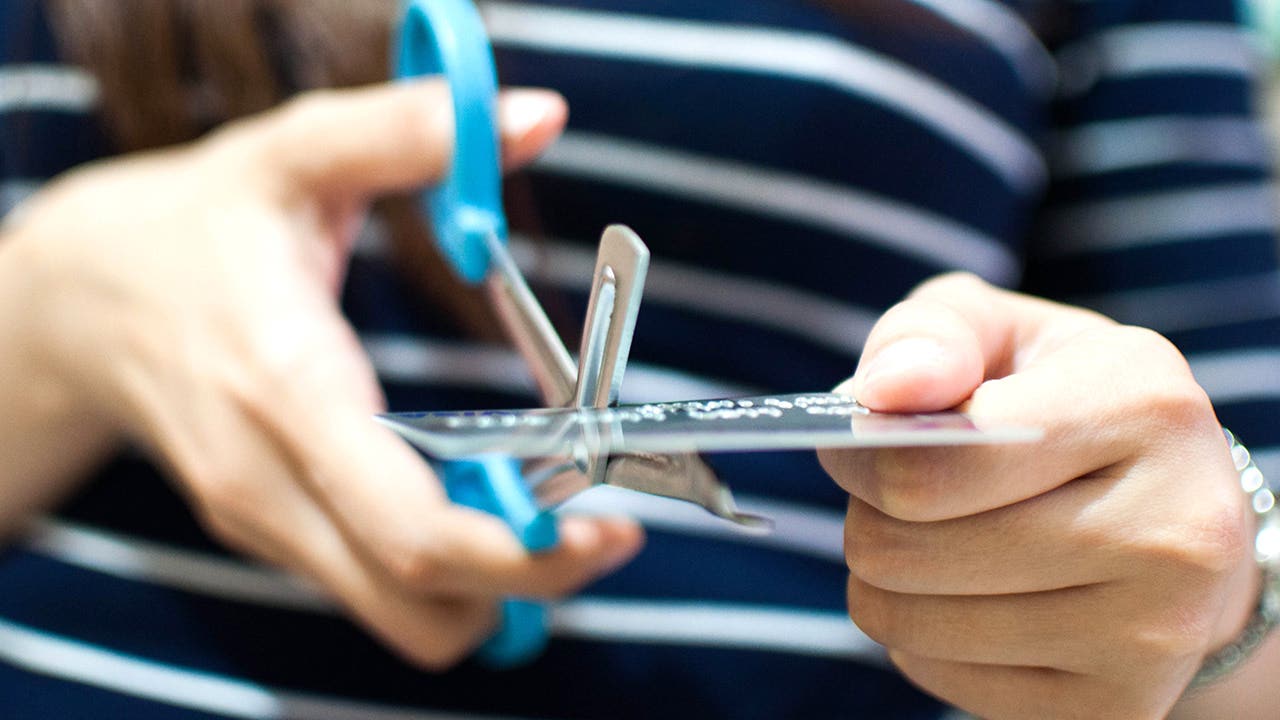What to do with an old or expired credit card

Key takeaways
- Closing a credit account can negatively affect your credit score by shortening your credit history and increasing credit utilization.
- Options for handling old credit cards include requesting a downgrade, upgrading to an unsecured card or keeping the card open for occasional use.
- Expired credit and debit cards can be disposed of by cutting them up or returning them to the issuer for recycling.
Every credit card has a shelf life, whether it surpasses its expiration date or you decide to cancel or upgrade to a new credit card. Sometimes even regular use can wear down the physical card itself so much that you need to get a new one.
But when a replacement arrives in the mail, what do you do with those old credit cards?
Handling old credit cards the wrong way can potentially have a lasting negative effect on your credit score. Here’s how you can prevent those consequences and know what to do with old credit cards.
Be careful about closing accounts
If you have a credit card that you simply don’t use or get value from, you may be tempted to cancel the account. However, closing a credit account outright can lower your credit score, especially if it was one of your first credit cards.
The average length of your credit history makes up 15 percent of your FICO score. The longer your credit history, the better for your overall score, but closing older accounts will shorten your average.
Closing a credit account also affects your credit utilization ratio. This ratio, or the amount of credit you use in relation to your credit limits, make up another 30 percent of your FICO score. When you close an account that’s no longer in use, you’re reducing the amount of credit available to you, which could increase your utilization into a range that could cause your credit score to go down.
Most experts suggest keeping your credit utilization below 30 percent for the best results, which means no more than a $3,000 balance for every $10,000 in open revolving credit available to you. However, those with credit scores of 800 often keep their credit utilization at around 11 percent, according to FICO.
Despite these consequences, it sometimes makes more financial sense to close a card. If it has a steep annual fee, for example, you could be losing money every year you don’t use the card. But there are still more options worth considering first, depending on your situation.
Request a downgrade
If the annual fee is the main reason you no longer want to keep your card account, you may be able to downgrade the credit card you have to a different card from the same issuer with no annual fee.
To downgrade your credit card to a no-fee option, call your card issuer using the number on the back of your credit card and ask about your options.
Upgrade to an unsecured card
Secured credit cards are a great asset for consumers looking to boost their credit scores. However, if you have outgrown your secured credit card, ask your credit issuer if you can upgrade to an unsecured credit card. Some issuers have options in place to graduate cardholders from a secured credit card, but if you have found yourself in a position where you feel ready for the next step in your financial journey, don’t simply cancel the card; call your issuer and ask for an upgrade, given they have unsecured options available.
If you have a qualifying credit score, you may be able to switch to a card with better terms and more benefits or ongoing rewards.
Keep the card for small purchases
If you aren’t interested in upgrading or downgrading your card, but you aren’t quite ready to take scissors to it either, consider keeping the account open by using the card occasionally. You could simply put one small charge on it every month, say at the gas station or grocery store, in order to keep the account active.
You could also use it for any recurring payments, such as a streaming service or newspaper subscription, and set up automatic payments so your balance gets paid on time every month. This is an even more seamless way to keep the account active with little effort.
What to do with expired debit and credit cards
If your credit card or debit card is past its expiration date, getting rid of it is pretty easy. Once you’ve received your replacement in the mail from your issuer, you can cut the card with scissors and throw the pieces away in the trash. Some paper shredders also have a slot for credit and debit cards that makes it easy to destroy them, along with other important documents you no longer need.
How to destroy metal credit cards
If you have a metal credit card like The Platinum Card® from American Express or the Chase Sapphire Reserve®, you’ll have to take an alternative path to dispose of your card.
Most metal credit card issuers will destroy your card for you if you send it back to them. Call the number on the back of your card to request a prepaid envelope you can use to send it back.
If you don’t want to mail your card and you live near a bank branch, you may also be able to drop your credit card off for disposal. Local bank branches may not destroy metal credit cards themselves, but they will know where to send them.
Join the world of expired card hobbyists
Interestingly, expired credit cards have become a collector’s item of sorts — at least for some people. There is even an American Credit Card Collectors Society with a stated purpose to “be a resource for the credit card collector and a communication link for members.”
According to the group rules, older cards are generally worth more money, as are cards in excellent condition that have never been signed. Rare credit cards are also worth more in general, especially if they feature a celebrity or have something special about them.
Your expired Citi Custom Cash® Card may not be worth a premium, but who knows? If you stick your old cards in a sock drawer long enough, perhaps they’ll be worth something someday.
How to find old credit card accounts
Another issue that may arise the longer you’ve had credit is how to access older accounts. Maybe you lost the physical card or simply forgot that you opened a new account. It can be difficult to remember the details, like your account number, the type of card you had or even the card issuer if it’s been out of use for a while.
To find old credit card accounts, start by looking at your credit reports. Head to the website AnnualCreditReport.com, which will let you access your reports from all three credit bureaus — Experian, Equifax and TransUnion — for free. Currently, you can access your credit reports from each of the bureaus once per week.
Once you have your credit reports, you can look them over for old accounts you may have forgotten about while you check for accuracy overall. If you find you have credit cards you’ve forgotten about, you can decide whether to call the card issuer to ask for a new physical card — or do nothing at all. Just remember, leaving an account dormant for too long may result in the issuer automatically closing the account.
The bottom line
Getting rid of your old credit card is part of the process of replacing it with a new version. If your card is simply expired or being replaced by the issuer, the process is pretty straightforward.
If you’re getting rid of your card because you want to close your account, though, make sure you think about the effects it may have. There are a few scenarios where it makes sense to close a credit account, such as high annual fees. But even in this scenario, you can always call the issuer to find out if it is possible to downgrade to a card with no annual fee. However, even if you choose to close one line of credit but continue using your other credit cards responsibly, your credit score can repair itself.






